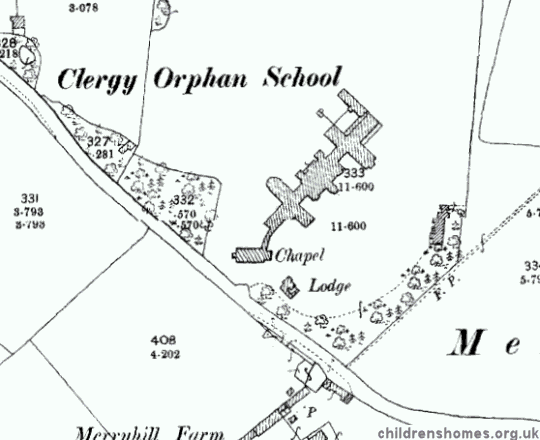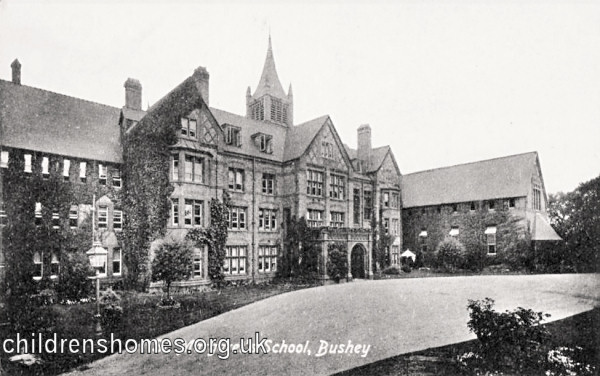Clergy Orphan School for Girls, St John's Wood, London, and Bushey, Hertfordshire
The Clergy Orphan Society was founded in 1749 to maintain and educate the orphaned (i.e. fatherless) children of Anglican clergymen, with subscribers to its funds including King George III and Princess Amelia. Initially, the charity paid for children to be educated at existing schools, beginning on May 30th, 1751, when John Pyrke was sent to a school in Thirsk, North Yorkshire. The Society subsequently established its own School at Silton Hall, Nether Silton, North Yorkshire, then in 1804 moved to premises at Acton, Middlesex. In 1805, it was agreed that the charity's objects should be to teach the orphan children humility, obedience, courtesy and submission to parents and superiors, and also to give them enough education to enable them to become useful members of society. Accordingly the curriculum was just to include reading, writing and basic arithmetic.
In 1809, the Society was reconstituted as the Clergy Orphan Corporation. Three years later, the School moved to new, purpose-built premises at St John's Wood Road, adjacent to the Lord's Cricket Ground. The accommodation at St John's Wood eventually became insufficient and on October 2nd, 1855, the boys were relocated to new premises at St Thomas Hill, Canterbury. The St John's Wood School then became one of the first all-girls' schools in England with its curriculum gradually expanding to 18 subjects including Latin and Greek.
The location of the School is shown on the 1895 map below.

Clergy Orphan School site, St John's Wood, c.1895.
In the 1890s, the School was forced to give up the St John's Wood site as the land was needed by the Manchester, Sheffield and Lincoln Railway for a new line. The school relocated temporarily to Windsor where, in December 1896, fifteen of the girls and the headmistress, Miss Emily Baylee, were invited to tea with Queen Victoria at Windsor Castle.
In 1897, the School moved to its new permanent premises at Merry Hill Road, Bushey, Hertfordshire. The new building was designed by a leading architect of the day, Alfred Waterhouse. A beautiful stained glass window by Henry Holiday was salvaged from the St John's Wood site and placed in the new chapel where it was dedicated by the Bishop of St Albans, Dr Festing. On taking up its new home, the school was renamed St Margaret's, after Queen Margaret of Scotland. Saint Margaret, a loving wife and mother and a great carer for orphan children, was felt to be a very good role model for girls.
The new School site is shown on the 1898 map below.

St Margaret's Clergy Orphan School site, Bushey, c.1898.

St Margaret's Clergy Orphan School, from the south, early 1900s. © Peter Higginbotham
St Margaret's is now a fully independent school for girls aged 4 to 18.

St Margaret's School, 2014. © Peter Higginbotham
Records
Note: many repositories impose a closure period of up to 100 years for records identifying individuals. Before travelling a long distance, always check that the records you want to consult will be available.
- St Margaret's School, Bushey — contact the School's Archivist.
Bibliography
- Jarvis, Enid The History of St Margaret's School, Bushey 1749-2009 (2009, St Margaret's Guild)
Links
Except where indicated, this page () © Peter Higginbotham. Contents may not be reproduced without permission.


